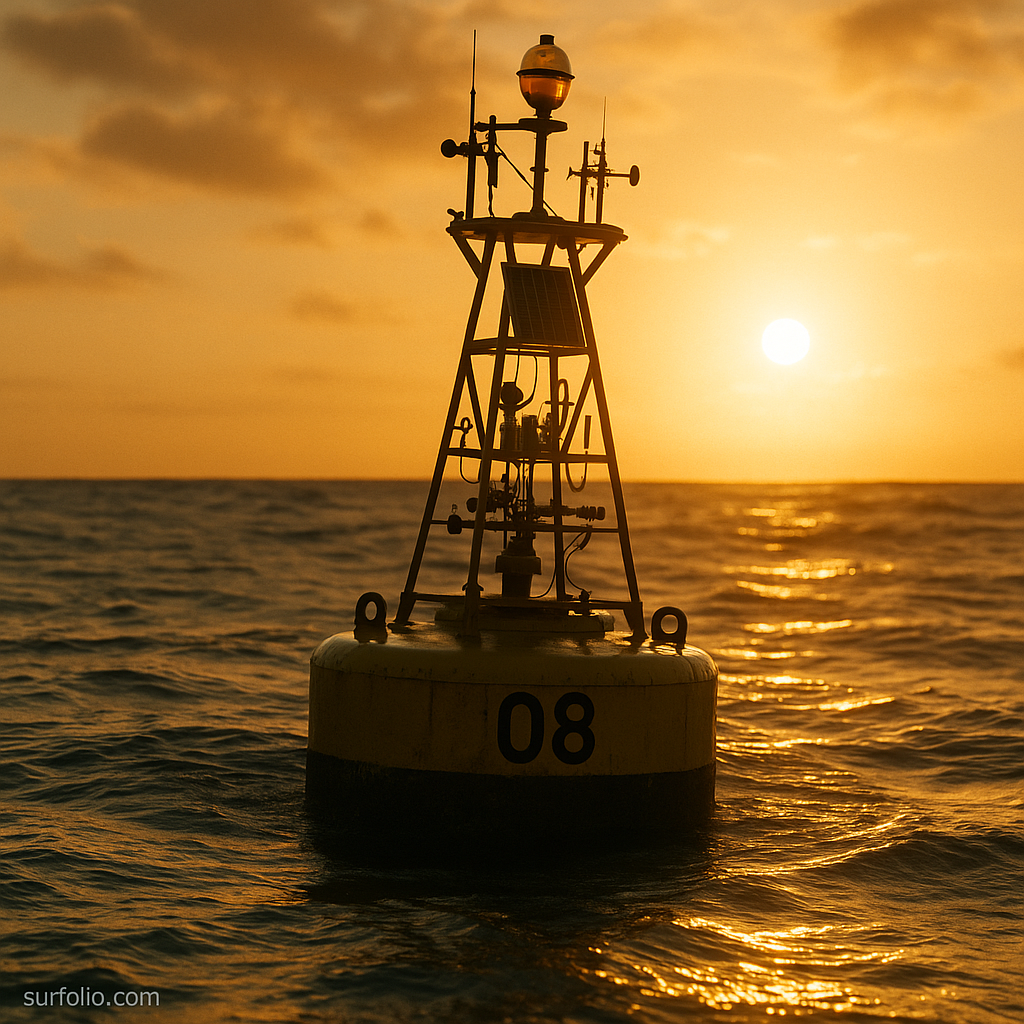
When you paddle out for a surf session, you’re tapping into the rhythm of the ocean — a living, breathing system of energy and motion. But what if you could predict its every move? That’s where ocean buoys come in. These silent sentinels, floating miles offshore, collect the data that helps surfers understand swell energy, wind, and wave periods long before a set hits the coast.
Learning how to interpret buoy data is one of the most valuable skills for any serious surfer. It bridges the gap between forecasting charts and the real-world waves you ride.
What Are Ocean Buoys?
Ocean buoys are floating instruments anchored in strategic locations around the world’s seas and oceans. Operated by organizations like NOAA (National Oceanic and Atmospheric Administration), these buoys measure and transmit real-time ocean and atmospheric data.
Each buoy is equipped with sensors that record multiple parameters, such as:
- Wave height – The vertical distance between crest and trough.
- Wave period – The time it takes for two wave crests to pass a single point.
- Wave direction – Where the swell originates.
- Wind speed and direction – Crucial for understanding local surface conditions.
- Water temperature – Affects both comfort and wave energy dynamics.
Together, these numbers paint a precise picture of what’s happening far beyond the shoreline.
How Buoy Data Helps Surfers
Surf forecasts rely heavily on buoy data, which translates the raw language of the ocean into something surfers can understand and anticipate. By analyzing buoy readings, you can gauge whether a session will be mellow, powerful, or completely blown out.
For example:
- Large swell height + long period (15–20 seconds) = Powerful, well-organized waves traveling from distant storms.
- Short period (6–8 seconds) = Locally generated wind swell — often choppy and less consistent.
- Offshore wind direction = Clean, groomed waves with open faces.
- Onshore wind direction = Messy and crumbled conditions.
Knowing how to combine these readings allows you to “read the ocean” even before seeing it.
Key Metrics Explained
Significant Wave Height (Hs):
This is the average height of the highest one-third of waves recorded. It gives a realistic sense of what you’ll face in the lineup — not the tallest set, but the dominant size you’ll encounter.
Dominant Period (Tp):
The dominant period refers to the most common time interval between wave crests. A higher period indicates a stronger, more organized swell, often created by distant storms that travel long distances without losing energy.
Swell Direction (Dir):
This tells you the origin of the swell. A west-northwest swell, for instance, may light up certain California breaks while leaving others flat. Every coastline reacts differently based on angle and exposure.
How Buoy Networks Work
Buoys are strategically placed to track the life cycle of swells. A storm in the North Pacific might first be detected by a buoy near Hawaii before the same swell reaches the U.S. West Coast days later.
Data is relayed via satellites to forecasting systems, allowing surfers to track the swell’s journey in near real time. By following this progression, you can estimate when conditions will peak at your local spot.
Reading Buoy Data Like a Pro
To interpret buoy readings effectively:
- Check multiple buoys along the swell’s path. This shows how the swell is evolving and losing or gaining strength.
- Note the dominant period. Anything over 12 seconds generally means longer, more powerful lines.
- Compare swell direction to your break’s exposure. A south-facing break won’t light up on a northwest swell.
- Cross-check with wind readings. Even perfect swell can be ruined by strong onshore wind.
- Use historical patterns. Each surf spot has its “sweet spot” direction and period — get to know yours.
Modern Tools and Apps
Several surf forecasting platforms visualize buoy data in surfer-friendly formats. Apps like Surfline, Magicseaweed, and Windy translate complex datasets into colorful charts and easy-to-read arrows. However, understanding the raw numbers gives you an edge — forecasts can be wrong, but buoys never lie.
Advanced surfers even customize alerts based on buoy thresholds, such as:
- Hs > 2.5m
- Tp > 14s
- Wind direction offshore
When those conditions align, it’s often the sign of an epic day ahead.
Why Ocean Data Matters Beyond Surfing
While surfers use buoy data for stoke and precision, this same information plays a vital role in maritime navigation, weather prediction, and climate research. Scientists use buoy data to study ocean currents, sea-level changes, and even hurricane behavior. Every data point contributes to a better understanding of Earth’s most dynamic system.
For surfers, it’s a reminder that wave riding connects you to a much larger story — one of global energy exchange, storm cycles, and the living heartbeat of the planet.
Common Mistakes When Reading Buoy Data
Even seasoned surfers can misinterpret buoy data. Here are some pitfalls to avoid:
- Confusing wave height and swell height: Total wave height includes local wind chop; focus on swell height for true surf potential.
- Ignoring local wind: Offshore buoys don’t account for beach-level wind effects, which can drastically change conditions.
- Over-relying on one buoy: Always cross-reference with nearby stations for accuracy.
A smart surfer doesn’t just read data — they interpret trends.
Final Thoughts
Understanding ocean buoys is like unlocking the ocean’s language. Once you can interpret their readings, the surf forecast transforms from a guess into a science. You begin to see how distant storms, wind patterns, and wave periods connect to the sets rolling beneath your board.
For surfers who crave both adventure and precision, buoy data bridges that gap — turning curiosity into confidence. So next time you check the charts, don’t just look at the numbers. Listen to what the ocean is telling you.
